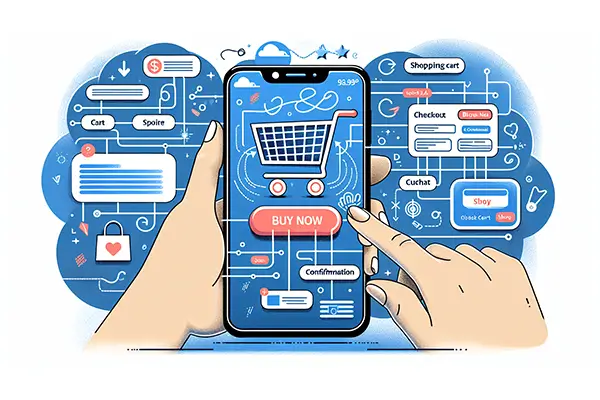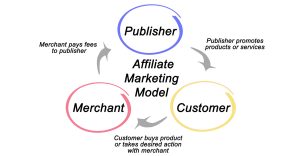
Share
Maximize Your Sales: Proven Ecommerce Conversion Rate Optimization Strategies
Boosting ecommerce conversion rates is key to elevating your revenue. This article details proven strategies for ecommerce conversion rate optimization, ready to be implemented to turn browsers into buyers and clicks into sales.
Key Takeaways
- Ecommerce CRO is crucial for increasing desired actions on a website, such as purchases and sign-ups, with average conversion rates around 2.5-3% being considered good.
- A user-friendly experience, especially optimized for mobile and streamlined checkouts, can significantly boost conversions by reducing cart abandonment and enhancing the shopping journey.
- Visual elements like quality product photography and video content are highly influential in increasing conversions, as they improve product visualization and customer trust.
Understanding the Fundamentals of Ecommerce Conversion Rate Optimization (CRO)
Before diving into the significance of ecommerce CRO, we must grasp its basic concept. CRO is a marketing tactic used to increase the percentage of website visitors who take a particular action. In the ecommerce realm, this could mean making a purchase, adding products to a cart, or signing up for email alerts. The more site visits convert into desired actions, the higher the sales and customer satisfaction for ecommerce businesses.
Furthermore, understanding conversion rates is key to creating effective CRO strategies. But what exactly is a conversion in the ecommerce context, and why is it important to measure conversion rates? We’ll explore this further.
Defining Conversion in the Ecommerce Realm
In ecommerce, conversions encompass a wide array of actions. These include:
- Making a purchase
- Adding products to a cart or wishlist
- Completing email signups
- Engaging in social media shares
Each of these actions represents the successful achievement of a marketing goal or a business’s objective, often leading to a sale.
Furthermore, calls-to-action (CTAs) play a pivotal role in guiding the audience through the ecommerce funnel, nudging them towards these conversion endpoints. Therefore, recognizing these various types of conversions is fundamental for crafting an effective CRO strategy.
The Importance of Measuring Conversion Rates
Monitoring conversion rates is like taking the pulse of your ecommerce store. It helps verify the effectiveness of website modifications and closely track the store’s performance. The average ecommerce conversion rates typically range from 2.5-3%, with achieving a baseline goal of 3% being considered good for online stores. Evaluating these rates allows businesses to track their progress towards these benchmarks and pinpoint areas that require enhancement.
In essence, tracking conversion rates presents an invaluable opportunity to optimize strategies and maximize sales outcomes. Next, we’ll examine ways to create a user-friendly ecommerce experience to augment these rates.
Crafting a User-Friendly Ecommerce Experience
A user-friendly ecommerce experience is the cornerstone of successful CRO. Imagine walking into a physical store with a cluttered layout, hard-to-find products, and confusing signage. Would you stay and shop or leave for a more organized store? The same principles apply in the digital realm. A well-designed user interface can increase a website’s conversion rate by up to 200%, while an enhanced user experience can further boost conversion rates by up to 400%.
Accomplishing this demands attention to two critical areas: optimizing for mobile devices and streamlining the checkout process in your online store.
Designing for Mobile Devices
In today’s digital age, the mobile phone has become a vital shopping tool. With more than 58% of global web traffic originating from smartphones and tablets, a responsive and mobile-friendly design is no longer optional but a necessity. To optimize the mobile user experience, consider simplifying site navigation, increasing button sizes to be more touch-friendly, and minimizing the amount of text on pages.
Moreover, boosting loading speeds by minimizing image file sizes can improve user experience and potentially enhance conversion rates.
Simplifying the Checkout Flow
A streamlined checkout process is the final bridge between a potential customer and a completed purchase. An optimized checkout process reduces cart abandonment and motivates customers to complete their purchases. To achieve this, consider strategies such as:
- Reducing the number of steps and form fields in the checkout process
- Providing guest checkout options
- Supporting multiple payment methods
- Clear and prompt calls-to-action, like ‘Add to Cart’ and ‘Checkout’, can also lead to quicker decision-making.
Having discussed user experience, we now turn to the impact of visuals on enhancing conversions.
Leveraging Visuals to Boost Conversions
Did you know that 63% of consumers consider good product images to be more important than product descriptions? This statistic underscores the power of visuals in the ecommerce landscape. High-quality product images and engaging multimedia content can significantly enhance a customer’s ability to judge and visualize products, leading to a 30% increase in conversions.
Yet, the focus isn’t merely on possessing good images; their usage also plays a vital role. Let’s look into two key areas: the power of product photography and the integration of video content.
The Power of Product Photography
Product photography can make or break a sale. High-quality professional product photography enhances perceived trustworthiness, contributing to customer confidence in the brand. Employing contextual images linked directly to products reduces user frustration by allowing easy navigation to items they are interested in.
The use of storytelling with customer testimonials that highlight real-life success stories can create an emotional connection with potential customers, further enhancing the effectiveness of product photography.
Integrating Video Content
Video content has emerged as a powerful tool in the ecommerce arsenal. It’s reported that adding a video to a landing page can increase conversions by up to 80%. Moreover, around 72% of customers prefer to learn about a product or service through video rather than text. By incorporating 360-degree views and product videos, ecommerce sites can deliver a more immersive experience, enhancing the likelihood of purchase.
Next, we’ll explore how refining site navigation and search functionalities can further amplify conversions.
Enhancing Site Navigation and Search Capabilities
Think of your e commerce website as a digital department store. Just as clear signage and organized shelves guide customers in physical stores, effective site navigation and search capabilities guide visitors through your ecommerce stores. A well-organized navigation bar enables visitors to quickly find what they’re looking for, leading to higher conversion probabilities.
Meanwhile, optimized website performance prevents visitors from leaving due to slow loading times, and intelligent search bars make finding products more efficient. To further enhance these capabilities, we need to focus on two key areas: streamlining the category page and optimizing product pages with improved site search.
Streamlining the Category Page
A well-structured category page is like a well-organized store aisle. It ensures users can find products quickly and without difficulty, enhancing the shopping experience and increasing the likelihood of a purchase. Some tips for creating a well-structured category page include:
- Making parent categories clickable
- Placing a subcategory within several main categories
- Enhancing explorative product browsing
- Ensuring users find what they are looking for
By following these tips, you can create a category page that is user-friendly and helps drive conversions.
Optimizing Site Search
A high bounce rate may indicate that site search is not meeting the needs of site visitors, prompting them to leave after viewing only a single page. To prevent this, tools such as heatmaps showcasing click, cursor movement, and scroll-depth mapping can enhance understanding of how customers engage with and search for products on ecommerce sites. Providing dedicated pages listing compatible products streamlines the search process for customers, ensuring a smoother shopping experience.
With navigation and search examined, we’ll now look into fostering trust with social proof and security.
Building Trust Through Social Proof and Security
Trust is a crucial ingredient in the recipe for ecommerce success. Social proof, such as customer reviews, ratings, and testimonials, can help build trust and credibility, encouraging potential buyers to make a purchase. Additionally, displaying security badges or certifications on a website can provide reassurance and build trust with potential customers, influencing conversions.
Let’s delve deeper into these two aspects: showcasing customer testimonials and highlighting security features.
Showcasing Customer Testimonials
Customer testimonials serve as a powerful form of social proof. They enhance credibility and help increase conversion rates by showcasing real-life success stories and positive customer experiences. Creatively incorporating testimonials into your website design, such as through animation or interactive elements, can engage visitors further.
Placing these testimonials in visible locations and using high-quality images and impactful quotes can aid in their visibility and memorability.
Highlighting Security Features
In an era of increasing cyber threats, security is a top concern for online shoppers. Highlighting security features on your ecommerce site can reassure potential customers and build their confidence in your brand. Some ways to do this include:
- Displaying security badges or certifications
- Providing clear information about your data protection policies
- Offering secure payment options
- Using SSL encryption to protect customer information
These measures can provide reassurance and build trust, influencing conversions.
Next, we’ll examine how offering promotions and discounts can further enhance your conversion rates.
Incentivizing Purchases with Promotions and Discounts
Who doesn’t love a good deal? Promotions, discounts, and limited-time offers can encourage purchases by creating a sense of urgency. Offering free shipping can also attract customers and be a crucial factor in their decision-making process, as the absence of free shipping might drive them to look elsewhere.
To maximize the effectiveness of these incentives, let’s focus on two aspects: crafting irresistible offers and leveraging the role of scarcity and urgency.
Crafting Irresistible Offers
Crafting irresistible offers is an art form. Calls to action within blog content can lead readers to take immediate action, such as taking advantage of a promotional offer.
Furthermore, search engine optimized blog posts can enhance visibility and attract more visitors, potentially increasing the effectiveness of promotional campaigns.
The Role of Scarcity and Urgency
Scarcity and urgency are powerful psychological triggers that can prompt faster purchase decisions. Pop-ups that create a sense of urgency can demand the user’s immediate attention, contribute to quicker decision-making, and potentially increase the website’s conversion rate.
Next, we’ll discuss how employing analytics can make your CRO efforts more targeted and efficient.
Utilizing Analytics for Targeted CRO Efforts
In the world of CRO, data is your best friend. Analytics tools like Google Analytics and Quantcast Measure provide insights into user behavior, helping you optimize your CRO efforts. By tracking website traffic and understanding user behavior, these tools can help you refine your strategies and maximize conversion rates.
To make the most of these insights, let’s look into understanding user behavior with heat maps and tracking conversion funnels.
Understanding User Behavior with Heat Maps
Heat maps are a powerful tool for understanding user behavior. They visually represent where users click most, highlighting interaction hotspots that can inform multivariate testing and layout enhancements.
User testing through methods such as heat mapping is essential to conversion optimization as it uncovers real user experiences and feedback, paving the way for informed improvements.
Tracking Conversion Funnels
Conversion funnel analysis is a powerful tool for understanding the customer journey. It helps identify where customers are dropping off during their path to purchase, allowing businesses to optimize these critical junctures effectively. By tracking macro-conversions and micro-conversions and understanding the exit rate metric, businesses can pinpoint areas for improvement and optimize their strategies to enhance conversion rates.
Having discussed analytics, we’ll now proceed to mastering conversion optimization via testing.
Mastering Conversion Optimization Through Testing
Testing is a vital component of mastering conversion optimization. A/B testing and multivariate testing are two important techniques used to refine the online shopping experience and validate design changes.
To further explore these techniques, let’s look at A/B testing for incremental improvements and multivariate testing for comprehensive insights.
A/B Testing for Incremental Improvements
A/B testing is a method of comparing two versions of a webpage to see which one performs better. By making small changes on web pages and testing them one at a time, businesses can isolate the change and see how it affects the conversion rate. This systematic analysis helps identify successful elements that can be applied for conversion improvements.
Multivariate Testing for Comprehensive Insights
Multivariate testing takes A/B testing to a new level. It allows for a better understanding of how various design elements and content work together to affect user behavior and conversion rates. Continuous iterative multivariate testing on high-traffic landing pages enables ecommerce sites to refine content placement and design iteratively for optimal conversions.
Having explored testing, we’ll now consider ways to promote repeat customers and cultivate loyalty.
Encouraging Repeat Customers and Fostering Loyalty
Repeat customers are the lifeblood of any successful ecommerce business. Retaining customers is often more cost-effective than acquiring new ones, and customers who have been with an ecommerce store for a longer period tend to spend more during their shopping experiences. By focusing on customer retention strategies and building long-term relationships, businesses can foster customer loyalty and encourage repeat business.
We’ll explore two essential strategies for accomplishing this: employing personalization tactics and instituting a strong customer loyalty program.
Personalization Tactics
Personalization can significantly enhance the shopping experience. By personalizing the user experience, ecommerce businesses may see increased conversion rates as users face a more direct path to purchase guided by relevant and focused messaging. In fact, personalization in ecommerce can lead to a positive return on investment, with surveys among marketers showing favorable outcomes in almost 90% of personalization efforts.
Implementing a Robust Customer Loyalty Program
A robust customer loyalty program can do wonders for fostering customer loyalty and encouraging repeat business. Such programs incentivize repeat purchases by acknowledging and rewarding customer loyalty.
By establishing a robust loyalty program, businesses can encourage long-term customer relationships and repeat business.
Summary
Maximizing sales in the competitive ecommerce landscape requires a strategic approach that encompasses a profound understanding of ecommerce CRO, a user-friendly ecommerce experience, effective use of visuals, enhanced site navigation and search capabilities, building trust, incentivizing purchases, leveraging analytics, mastering conversion optimization through testing, and fostering customer loyalty. By applying these strategies, you can transform your ecommerce store into a conversion powerhouse and maximize your sales. Remember, the journey to ecommerce success is a marathon, not a sprint. So, take your time, test, iterate, and watch your conversion rates soar!
Frequently Asked Questions
What is a good conversion rate optimization?
A good conversion rate optimization strategy includes creating effective, concise, and engaging forms. Aim for a conversion rate of 2% to 5% for better performance.
What is a good ecommerce conversion rate?
A good ecommerce conversion rate typically ranges from 2-4%, with an average of around 2.5-3%. This is the baseline goal for your online store. Aim to optimize this with conversion rate tactics to improve your business’s performance.
How do I optimize my ecommerce website for conversions?
To optimize your ecommerce website for conversions, focus on mobile optimization, include video content, use A/B testing for prices, send abandoned cart reminders, reduce form fields, and re-target visitors. Additionally, make use of high-quality images and videos, offer free shipping, provide limited-time coupon codes, and utilize live chat software and chatbots. Experiment with different strategies and continuously tweak your checkout process to drive higher conversion rates.
What role do visuals play in boosting conversions?
High-quality visuals, such as product photography and video content, play a crucial role in boosting conversions by enhancing a customer’s ability to visualize and evaluate products, thereby increasing the likelihood of purchase.
How can I encourage repeat customers and foster loyalty?
To encourage repeat customers and foster loyalty, focus on customer retention strategies, personalize the shopping experience, and implement a robust customer loyalty program. These steps will help build long-term relationships with your customers.









